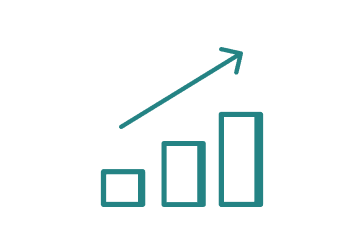Financial analysis sounds like a pretty straightforward concept, but there are many variations on how to do the financial analysis—and why. At its core, financial analysis involves compiling a company’s financial data and organizing it into several key spreadsheets (including cash-flow and profit-and-loss statements, and a balance sheet), then using those documents (along with other information, including, but not limited to, industry benchmarks, trends, and forecasts, and the company’s own historical trends) to assess the company’s overall financial health, position the company for investment, track the performance of specific products and/or departments, and identify opportunities for growth. In a nutshell, sound financial analysis services provides a blueprint for forecasting and decision making; without it, the company is essentially flying blind.
A larger company with enough resources in its own in-house finance department might be equipped to handle its financial-analysis needs. And yet, even some larger companies—and certainly ones with fewer in-house resources—can benefit from outside experts, such as Paro finance professionals, who have deep experience analyzing financial data and know exactly what they’re looking for.
Solid Numbers, Solid Foundation
Meaningful financial analysis depends on meaningful—which is to say, thorough and accurate—financial data. Conversely, flawed data will yield flawed analysis. With that in mind, here are some best practices for financial analysis at the front end of the process:
- Be organized and consistent in entering financial data, with extreme attention to detail.
- Keep all of your Excel formulas and calculations as simple and consistent as possible.
- Make notes alongside the cells to remind yourself how you arrived at your numbers.
- Have more than one individual review the work; if you can, build in redundancy checks.
- Make sound, data-based assumptions, and keep them consistent over time.
Once you have a solid set of data, the finance professional can generate the cash-flow and profit and loss (P&L) statements, balance sheet, and other documents that provide the raw tools to look inside your company, assess its health and stability and make educated decisions on how to enhance its performance going forward.
What Expert Financial Analysis Can Show You
There are myriad financial analysis techniques that can explore and enhance a company’s performance. Let’s consider budgeting and budget forecasting. If you have at least two or three years’ worth of financial data behind you, you can use that to forecast the coming fiscal year, making assumptions about your revenue trends and adjusting for any changes you foresee in expenses (supplier price increases, cost savings you’ve identified, etc.).
This is traditional horizontal analysis, and if your revenue has been trending upward, you can plug in the expected percentage increases and sit back and coast—or hire a finance professional who can use expert financial-analysis techniques to show how your forecast can be enhanced. For example, by analyzing the company P&L data alongside industry trends, market conditions, and the potential to tap new markets with targeted marketing campaigns, the finance professional can identify opportunities for growth based on real information from both inside and outside the company, and adjust the budget forecast accordingly.
Beyond short-term budget forecasting, an experienced finance professional can use historical performance and assumptions about the future to build a financial model to forecast a company’s profitability, financial health, and growth potential years down the road. Working from income and cash-flow statements, balance sheet, and supporting schedules, a financial analyst can build models to show what the company’s assets, liabilities, profit, cash, shareholders’ equity, etc., might look like four or five years into the future. These models are essential tools for raising and allocating capital, making strategic acquisitions, identifying areas for strategic growth, divesting of assets or unprofitable units, and preparing a valuation for a sale or IPO.
Forecasting and modeling aside, there are many other ways to use financial analysis to gain crucial insights into your business. One of the most important ones is to use your data to evaluate your financial performance as it happens—by tracking key performance indicators (KPIs). Primary KPIs you’re undoubtedly watching are revenues, expenses, and gross and net profit. There are many other KPIs that you—or an outsourced finance professional—should be tracking through your financial models, including: operating cash flow; working capital; current ratio (assets divided by liabilities); debt-to-equity ratio (total liabilities against shareholders’ net worth); revenue and expense actuals vs. target; turnover of accounts receivable and payable; inventory turnover; return on investment; and more. All of these together build an ongoing snapshot of the company’s health, solvency, and opportunity.
Help Is on the Way
If you’re convinced your company needs more robust financial analysis, and you’re considering the option of getting outside expertise, remember that some of the best and most experienced financial analysts now work as freelancers, and may bring more value for the money to your operation than a salaried employee who lacks the same experience. One option is to outsource your financial analysis to the Paro network of freelancers, which is vetted to the top 2 percent of freelancers in the industry.
We assume you wouldn’t try to assess your company’s financial health just from looking at your bank balance at the end of the day. But a few hastily thrown together Excel spreadsheets aren’t doing your company justice either. If you don’t have someone providing your company with all the tools and insights of thorough financial analysis, it probably is time to take the plunge.












